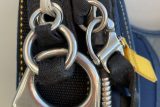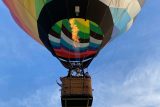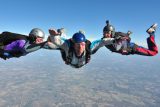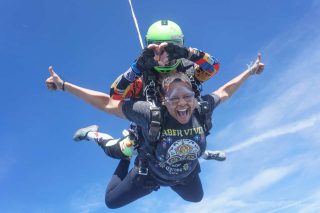How to Get Your Skydiving Certification
Learn to Skydive
4 years ago
How to Become a Certified Skydiver
With a little grit, the right roadmap, and a pinch of dedication, you can make your dreams of skydiving certification a reality. Will getting your skydiving license be easy? Not necessarily. Will it be the most rewarding challenge you’ve ever undertaken? Undoubtedly.
As someone who has worked within the industry and walked the path from tandem skydiver to licensed skydiver, I’m well acquainted with what it takes to get that precious A License stamp. Want the inside scoop? Well, I’m happy to share. Here’s how to get your skydiving certification.
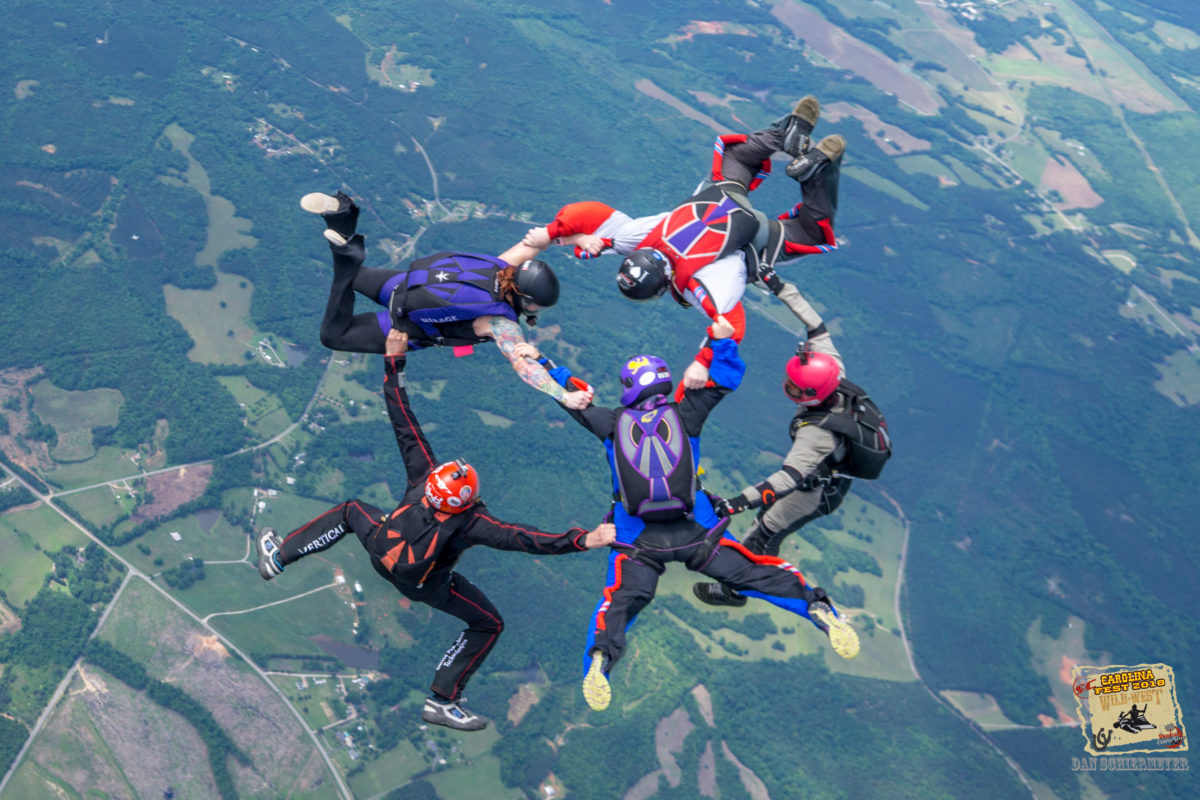
Get Committed
Before you embark on the journey to get your skydiving certification, you need to decide if you really want it. Becoming a certified solo skydiver isn’t going to happen overnight. You’ll have to seriously commit resources like time and money to the endeavor. Which leads us to the two questions a skydiving center gets asked most often about skydiving certification: How much will it cost to become a certified skydiver? And how long will it take to get skydiving certification?
Cost to Become a Certified Skydiver
The cost of your skydiving certification will depend on the number of jumps it takes for you to pass each Accelerated Freefall (AFF) level. Because this will vary from person to person, it’s difficult to give a hard and fast figure. If you were to pass each level the first time and pay jump by jump, the total cost of AFF Phase 1 (which covers your first jump course through category E-3) and AFF Phase 2 (which covers Category F through your check dive) will cost $3,760. If you are able to take advantage of package pricing by paying for your phases in full rather than level by level, the total cost will be $3,370—a savings of nearly $400.
How Long Does it Take to Become a Licensed Skydiver?
The amount of time it takes to achieve skydiving certification will come down to how much time you can give. Are you able to come out every weekend and some weekdays or just once a month? Some individuals are able to knock out everything they need for skydiving certification in three months. For others, the timeline is closer to a year. On average, it takes 4-6 months to complete all the requirements and receive an A License.
Requirements to Earn a Skydiving License
Skydive Carolina utilizes the United States Parachute Association’s Integrated Student Program to train students in an AFF Program. In this curriculum, skydiving students are taught the essential freefall and canopy skills that they will need to become competent licensed skydivers.
The syllabus is broken down into jumps within eight categories (A-H). The completion of jumps within these categories works toward the 25 total skydives that are required to obtain an A skydiving license. In addition to the 25 required jumps, to receive skydiving certification, an individual will also need to learn to pack a parachute, demonstrate the freefall skills they have learned on a final “check-dive”, as well as pass a written and oral exam.
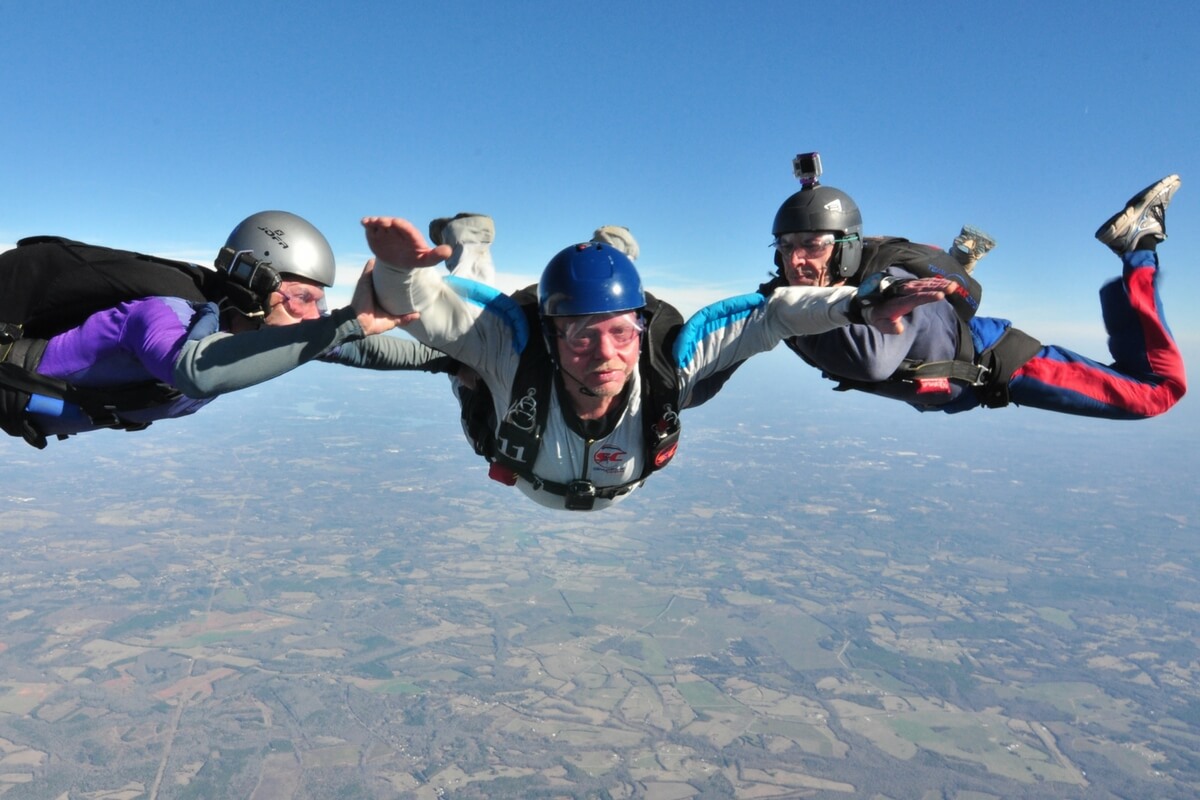
Schedule Your First Jump Course
If you’ve decided learning to skydive is something you are ready to tackle, your first step, logistically speaking, is to schedule your first jump course.
The first jump course involves 6-8 hours of a mix of hands-on and in-classroom training that will teach you about the parachute gear and how it works, correct freefall body position, identifying and handling emergency procedures, and flying the canopy. Following successful completion of the course, you will make a skills evaluation tandem skydive with a multi-rated skydiving instructor to demonstrate the skills necessary to move on toward your Category A level one skydive aka your first solo skydive!
Skydive Solo for the First Time
It’s time to shine! Even if you’ve accrued a few tandem skydives by now, your first solo skydive will be in a league all its own. Truly, the first solo skydive is a pivotal moment in your skydiving journey: it is when things start getting really real.
On your first solo skydive, you are no longer attached to a multi-rated skydiving instructor. Rather, you will be sporting your own parachute and jumping with two freefall instructors alongside you. These instructors will hold on to grips on your jumpsuit to help assist you as you exit the aircraft. During this skydive, you’ll need to demonstrate altitude awareness, a stable freefall body position, and the deployment of your own parachute. Once you are under canopy, a member of the ground crew will use a wireless radio to provide you with additional instructions, if needed, to navigate to the landing area.
After your landing and the triumphant whoops, hollers, and high-fives that follow, you will sit down with your instructor to review your freefall video, debrief the skydive, and learn what your next steps will be.
Crush Those Categories
Now, it’s just a matter of crossing things off the A license “to-do” list. Each category within the skydiving A license program will teach you increasingly intricate freefall skills like forward and backward movement, fall rate changes, and some fun maneuvers like barrel rolls and flips! Additionally, as you progress, you will continue to learn and demonstrate parachute maneuvers to prove that you can safely traverse from the sky to the ground. As you near the end of your skydiving certification progression, you will then need to work with a certified parachute rigger to learn to pack a parachute.
Finally, once you have learned to pack a parachute, completed your required exams and check dive, and accrued 25 jumps, you’ll be the proud recipient of a USPA Skydiving A License!
Take the First Step
You’ll need to schedule your first jump course in advance, so don’t delay! If you don’t see any listed here, please contact us to discuss upcoming course dates! For additional information, view the FAQs and see AFF pricing.
